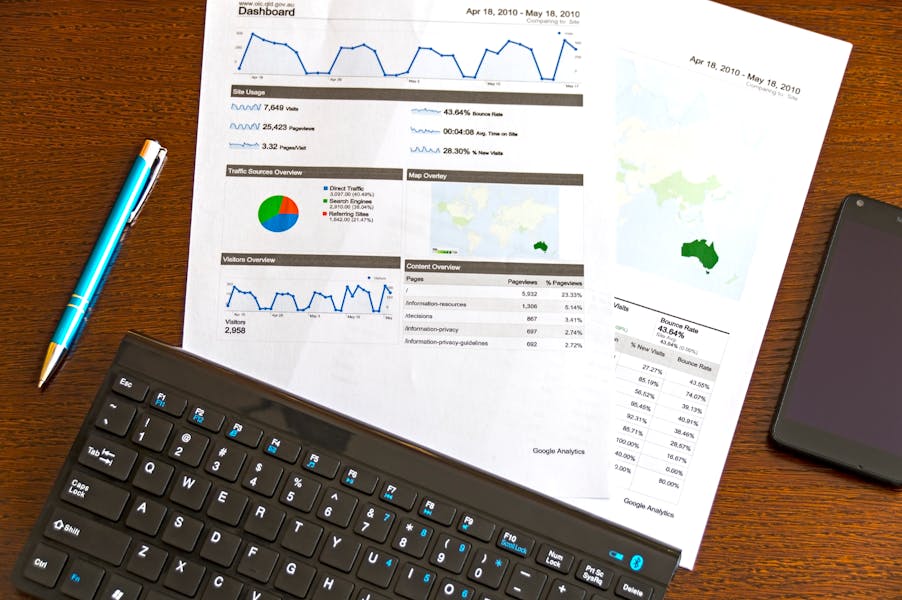Google Analytics is a powerful tool for tracking user interactions, monitoring website performance, and measuring conversion goals. However, it has limitations. While Google Analytics can provide extensive data on website performance, its goals feature is unable to track certain types of information. This article will explore “What data are Google Analytics goals unable to track?” and provide an in-depth analysis of these constraints.
Understanding what Google Analytics cannot track is crucial for marketers and webmasters to avoid misinterpretations and inaccurate reporting. Missing out on these insights could result in flawed strategies and missed opportunities. This guide will help you identify these limitations, discuss the reasons behind them, and offer tips on how to fill these gaps using alternative tools or methods. We’ll cover topics ranging from personal user details and customer sentiment to off-site interactions, giving you a comprehensive understanding of the data that slips through the cracks in Google Analytics goals.
Let’s explore how addressing these gaps can ensure a more accurate representation of your website’s performance.
What Data Is Google Analytics Goals Unable to Track?
Google Analytics goals cannot track personal user details like names or email addresses, customer sentiment, off-site interactions, or data from external websites. It also struggles to capture precise download metrics, data on multiple subdomains, and more. To track these, consider integrating third-party tools or using custom tracking methods.
The Hidden Gaps
Google Analytics is a versatile platform for measuring website performance but there are better solutions. Several types of data remain beyond the scope of its goal-tracking capabilities. This section will explore what data Google Analytics goals cannot track and why this matters for your business strategy.
First, Google Analytics cannot track personally identifiable information (PII). This limitation is due to privacy regulations and Google’s policy to maintain user anonymity. While you can track events like form submissions, the actual content—such as names, email addresses, or phone numbers—is hidden. This can make it challenging for businesses that rely on detailed user information to personalize marketing strategies.
Second, Google Analytics goals cannot measure off-site interactions. If users engage with your brand outside your website, such as on social media platforms or third-party blogs, these interactions are not reflected in your goal conversions. This makes getting a holistic view of your brand’s influence and reach harder.
Third, customer sentiment is something Google Analytics cannot track. Sentiment analysis requires advanced natural language processing (NLP) algorithms outside the scope of standard Google Analytics goals. This can limit your understanding of how users feel about your content, products, or services.
Additionally, while Google Analytics can track downloads, it often needs help to capture data accurately across multiple subdomains. This is particularly problematic for businesses with complex website structures. Without proper cross-domain tracking, you might miss crucial data points.
Understanding these limitations is crucial for effective decision-making and accurate reporting. By recognizing what Google Analytics cannot track, you can supplement your analytics strategy with additional tools and techniques to fill the gaps.
Limitations of Google Analytics Goals and Solutions
Unable to Track Personal Information
Google Analytics strictly prohibits the tracking of personal data like names, email addresses, and phone numbers to comply with privacy regulations. This ensures user anonymity but can be a hurdle for businesses that rely on such data.
Off-Site Interactions and External Links
Interactions happening outside of your website—such as engagement on social media posts or third-party website mentions—are not captured in Google Analytics goals. For better tracking, consider using URL tagging, social media insights, or third-party analytics tools.
Customer Sentiment and Behavioral Analysis
Standard Google Analytics goals cannot gauge customer sentiment or emotional response. Sentiment analysis requires NLP, which can be integrated using third-party platforms like HubSpot or SEMrush.
Download Tracking Across Multiple Subdomains
While download tracking is possible, it’s often imprecise, especially when dealing with multiple subdomains. Implementing cross-domain tracking can help mitigate this issue.
Measuring User Engagement Beyond Page Views
Google Analytics measures page views, clicks, and other on-site activities, but it needs help tracking long-term user engagement and loyalty. To address this, use tools like Hotjar or Crazy Egg for heatmaps and session recordings.
Data Google Analytics Goals Miss: Top 5 Overlooked Metrics
- Personally Identifiable Information (PII):
- User names, email addresses, and phone numbers.
- Sensitive data like credit card details or addresses.
- Off-Site Interactions:
- Social media engagements.
- Interactions with third-party blogs or websites.
- Customer Sentiment:
- User sentiment analysis based on feedback or reviews.
- Emotional responses to content or marketing campaigns.
- Download Data on Multiple Subdomains:
- Accurate tracking of downloads across a network of websites.
- User Actions Not Defined as Events:
- Custom user actions that are not set up as events in Google Analytics.
Why Understanding Google Analytics Limitations Is Important
Knowing what data Google Analytics goals cannot track is essential for developing a comprehensive analytics strategy. Ignoring these limitations can lead to incomplete data, inaccurate reporting, and misguided business decisions.
For example, failing to track off-site interactions could result in missing valuable data about your brand’s reach and influence. Similarly, being unable to track PII might limit your ability to provide personalized experiences to users.
It’s crucial to consider additional tools like Hotjar, SEMrush, or social media analytics platforms that can offer more granular data and insights. Combining these tools with Google Analytics can give you a 360-degree view of your digital performance and customer behavior.
Understanding these limitations allows you to create a more effective strategy, address potential data gaps, and implement supplementary tracking solutions that provide a complete picture of your marketing and sales funnel.
Exploring What Google Analytics Goals Cannot Track: The Key Takeaways
Google Analytics and Data Privacy
Due to privacy concerns, Google Analytics cannot collect personal data. Understanding these restrictions can help you stay compliant and avoid penalties.
Off-Site Tracking Challenges
Google Analytics goals only focus on on-site activities. Off-site tracking requires additional tools or custom solutions.
The Importance of Supplementary Tools
Tools like Hotjar, HubSpot, and Crazy Egg are necessary to fill the gaps in data collection and provide more detailed tracking and insights.
Sentiment and Behavioral Analysis
Understanding customer sentiment is vital for creating effective strategies. Use advanced tools like HubSpot to gain insights into user emotions and opinions.
Bottom Line
Google Analytics is a robust tool for tracking website performance but has limitations. Knowing what data Google Analytics goals cannot track can help you refine your analytics strategy, use supplementary tools effectively, and understand user behavior comprehensively. By being aware of these gaps and adopting additional tools and techniques, you can ensure a more accurate and insightful representation of your website’s performance.
FAQ’s
Q. Can Google Analytics track user names and email addresses?
A. Due to privacy policies and regulations, Google Analytics cannot track user names, email addresses, or any personally identifiable information (PII).
Q. How can I track off-site interactions?
A. Off-site interactions can be tracked using third-party tools, such as social media insights or tagging URLs shared across other platforms.
Q. What tools can I use to analyze customer sentiment?
A. Platforms like HubSpot, SEMrush, and Qualtrics offer advanced sentiment analysis features that Google Analytics needs to include.
Q. Why can’t Google Analytics track download data accurately across subdomains?
A. Google Analytics needs help with download tracking across subdomains due to cookie limitations and the need for complex cross-domain tracking setups.







